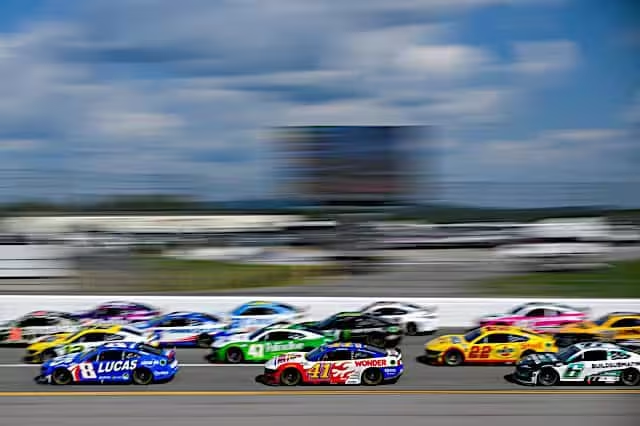NASCAR fans have dealt with the Next Gen car for a solid chunk of time now, yet the car still raises concerns in what feels like every other race.
This week, those concerns reared their heads during the closing moments of the Yellawood 500 at Talladega Superspeedway, when Kyle Busch tried to exit the two lines of cars that had already formed to make a late race pass. Nobody went with Busch, and thus he fell farther and farther toward the back of the pack.
These events took place after fans witnessed nearly 10 minutes of four-wide (yes, you read that correctly) racing while drivers were attempting to save fuel. That certainly didn’t help NASCAR in the PR department, but in truth it has nothing to do with the Next Gen car specifically, and the problems aren’t something NASCAR hasn’t worked around in the past. The real question is why didn’t NASCAR do just that this past weekend?
Fuel Saving Can Be Fixed by Stage Adjustments
The thing with superspeedway racing that never fails to disappoint is that it seems like none of the tracks:
a) talk to each other or …
b) want to use the same ideas as one another.
Before the final Daytona race of the season, questions circled all week long about whether or not this would turn into another fuel-saving race, but NASCAR acted.
The stage breaks saw an adjustment in length that allowed the first stage to be run all out while the other two were far too long for anyone to make it on one tank, no matter how much fuel they saved. Granted, that race was 400 miles as opposed to 500, but the same basic principle could certainly be applied. It doesn’t take a mathematician to spread those extra 100 miles out throughout the stages.
Does it make the breaks a little wonky? Sure, but does it also make sure that nobody is riding around a 2.5-mile track at half throttle? Yes. Both can be true.
All that NASCAR needed to do was take the same principle that worked just fine at Daytona and apply it to a nearly identical track. However, NASCAR has bigger fish to fry right now, so that point will just have to lie where it is.
The Next Gen Car is Not Why Busch Fell Back
Truth be told, Busch could have been in anything from a top fuel car to a 1986 Lincoln Continental and he would have dropped back when he made his move. The Next Gen car is not to blame for the principle of drafting and aerodynamics — physics are.
When Busch pulled out of line, nobody went with him, and that’s the…
Click Here to Read the Full Original Article at …

